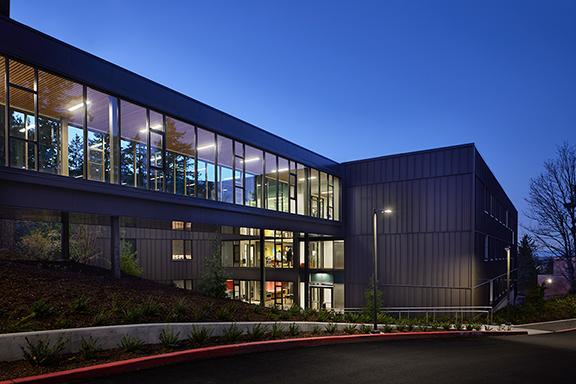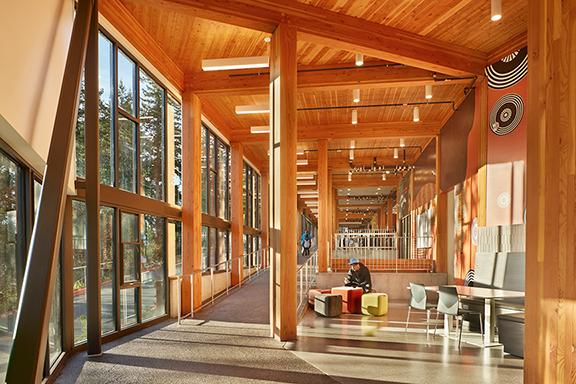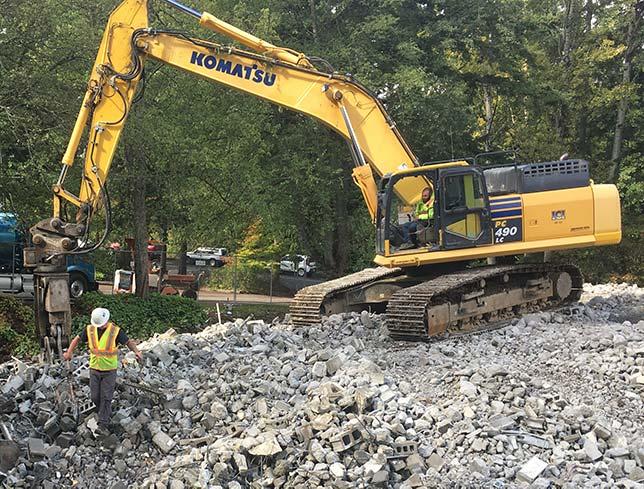Alma Clark Glass Hall - PW746


Alma Clark Glass Hall welcomed its first student residents in September of 2021.
Western’s Board of Trustees unanimously approved naming the new residence hall in honor of Alma Clark Glass, the first Black student to attend Western. Western President Sabah Randhawa said the resolution passed by the trustees affirms that “history matters on our campus” and “unfinished business” remains in recognizing the achievements of Black, Indigenous and other people of color in Western’s history.
According to University records, Alma Clark Glass attended Washington State Normal School, a prior name for what eventually became Western Washington University, during the winter and spring of 1906. She completed coursework in psychology, geography, physical culture, biology, and botany, as well as observation and practice teaching. She went on to become an assistant librarian in the Seattle Public Library System in November 1906, having achieved the highest score on the civil service examination, according to the Seattle Republican newspaper.
She was a founding member of the Seattle chapter of the National Association for the Advancement of Colored People in 1913, was part of an effort seeking to block public showing of the racist film “Birth of a Nation,” and served as a member of the Board of Directors for the Seattle Urban League in 1946.
Alma Clark Glass Hall is located among the Ridgeway complex of residence halls, on the site of the former Highland Hall and Lounge. The new residence hall offers 413 beds in a mix of room types, including semi-suites, full suites, and studio single apartments. The project provided a net gain of 264 beds after accounting for the loss of Highland Hall.
Bryan Potter, with Bryan Potter Design, and Anita Yap, with MultiCultural Collaborative, joined the team to facilitate engaging students and other Western and community members in discovering, curating and installing graphics and artwork to celebrate diversity and the life of Alma Clark Glass. Western Industrial Design student and artist Katana Sol designed the artwork that flanks the Shared Journey and common spaces and says of the project, "As you walk along this journey, it is my hope that black joy can be illustrated and inspiring for us to come together as a community to appreciate our accomplishments and beauty that makes us who we are."
Designed with accessibility and inclusion in mind, the new building creates a single pathway for everyone, described as a shared journey for the community, using a series of ramps and an elevator to make the Ridgeway community ADA accessible for the first time. Clark Glass Hall also offers gender-neutral restrooms throughout the building. A ramp and elevator were added to Ridgeway Commons to create ADA access to collaborative spaces in the building and second-floor dining, in addition to two new gender-neutral restrooms.
A large community kitchen and common area on the main floor of the new building serves as a central hub, while study lounges and community kitchens on almost every floor, along with outdoor gathering places, encourage academic and social interaction. A multipurpose room can be used for events, presentations, and student-faculty collaboration, while a reflection room with footwash provides space for quiet moments. Enclosed bicycle storage will keep bikes safe and dry, and a pet wash will help keep animal companions clean and healthy.
Early participation in the design process by students and other community members facilitated the creation of a residence that aims to be barrier-free and welcoming for everyone.
The project achieved a LEED Gold rating, scoring points in a wide variety of categories including water efficiency; optimizing energy performance; sustainable site strategies; indoor environmental quality; construction and demolition waste management, including recycling and reuse; renewable energy production, green power, and carbon offsets; high quality views; training users to ensure systems function as designed; offering alternative transportation options; use of lower-impact materials; and innovation.
Trees from the site were used for salmon habitat restoration projects, and the roof beams from the old Highland Lounge were reused as furniture in the new building.
The overall goal across the specific achievements is to view the building, site, and surrounding environment holistically to create a project that meets human, ecological, and community needs.

Start Construction: January 2020
Complete Construction: September 2021
Contact Information
Sherrie Montgomery, Project Manager, (360) 650-6519
Jonathan Higgins, Director, University Communications, (360) 650-3350
